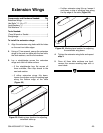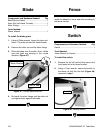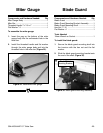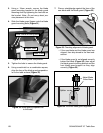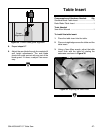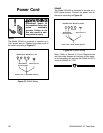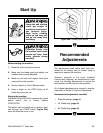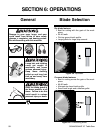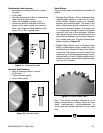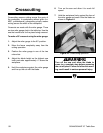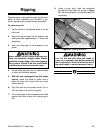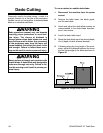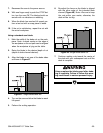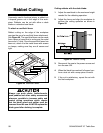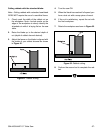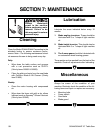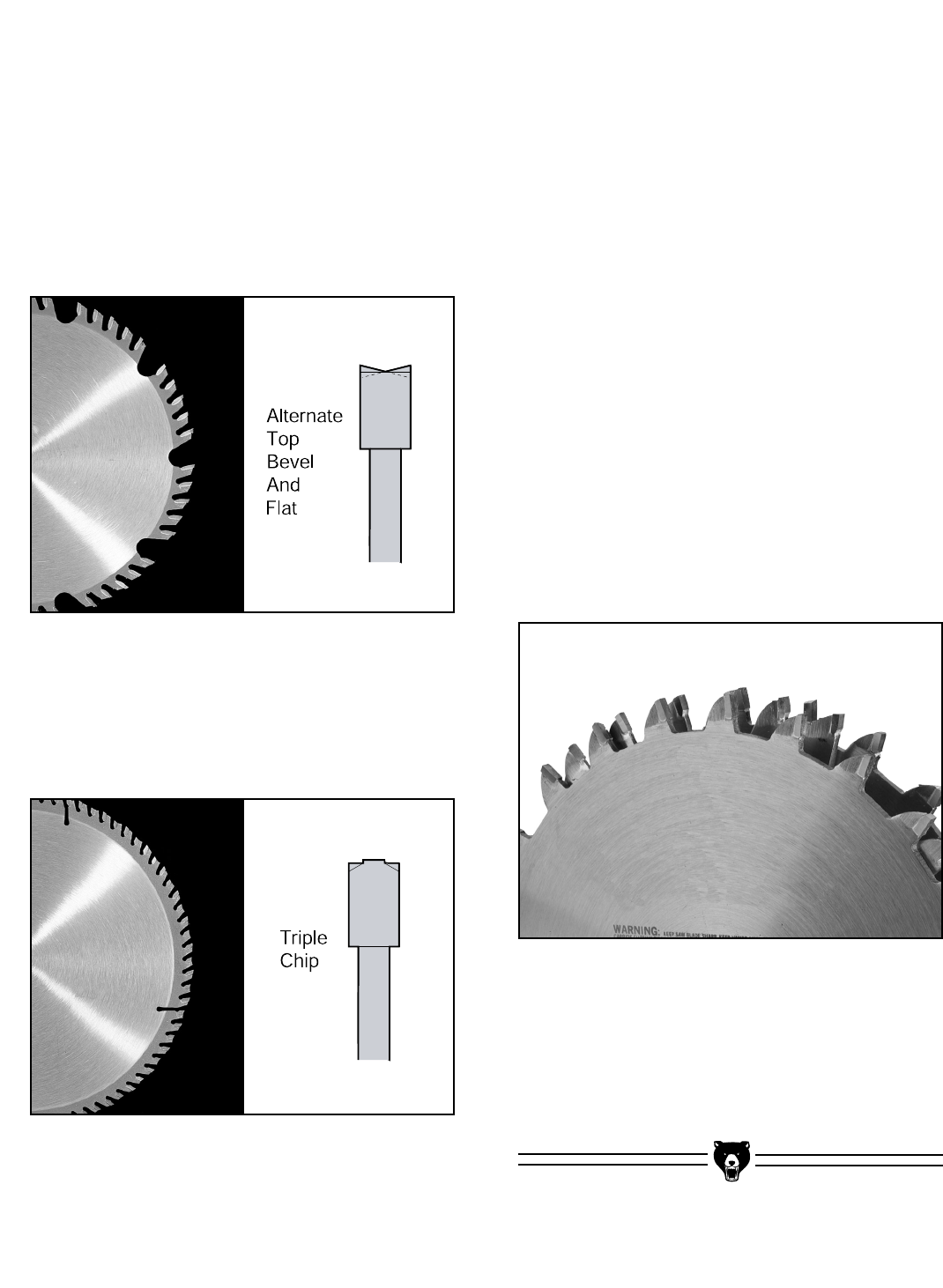
G0444/G0444Z 10" Table Saw -31-
Combination blade features:
• Adequate for cutting both with and across
the grain.
• 40-50 teeth.
• Alternate top bevel and flat, or alternate top
bevel and raker tooth profile.
• Teeth are arranged in groups of five.
• Gullets are small and shallow within the
groups of five teeth, similar to a cross-cut
blade; then large and deep between each
group of five, like a ripping blade.
Figure 41. Combination blade.
Laminant blade features:
• Best for cutting plywood or veneer.
• 40-80 teeth.
• Triple chip tooth profile.
• Very shallow gullet.
Figure 42. Laminate blade.
Dado Blades:
There are two types of dado blades: stacked and
wobble.
• Stacked Dado Blade—These dedicated dado
cutting blades consist of a set of up to 8 indi-
vidual blades. Multiple cutters are "stacked"
between two outside blades. The width of the
dado is determined by the combination of cut-
ters that are “stacked” together. The dado is cut
in a single pass leaving a smooth and square
channel in the face of the workpiece. Stacked
dado blades are the most expensive option but
are worth considering if your projects require a
lot of visible dado cuts. A typical stacked dado
blade is shown in Figure 43.
• Wobble Dado Blade—Also a dedicated dado
blade, a wobble blade usually consists of a sin-
gle blade that is tilted on the arbor shaft while it
is spinning. The channel is cut in the face of the
workpiece as the blade passes through its pre-
adjusted width of travel. Wobble blades are an
inexpensive option when visibly pleasing chan-
nels are not a concern.
Figure 43. Stacked dado blade.
Note—This section on blade selection is by no
means comprehensive. Always follow the saw
blade manufacturer's recommendations to
ensure safe and efficient operation of your table
saw.



